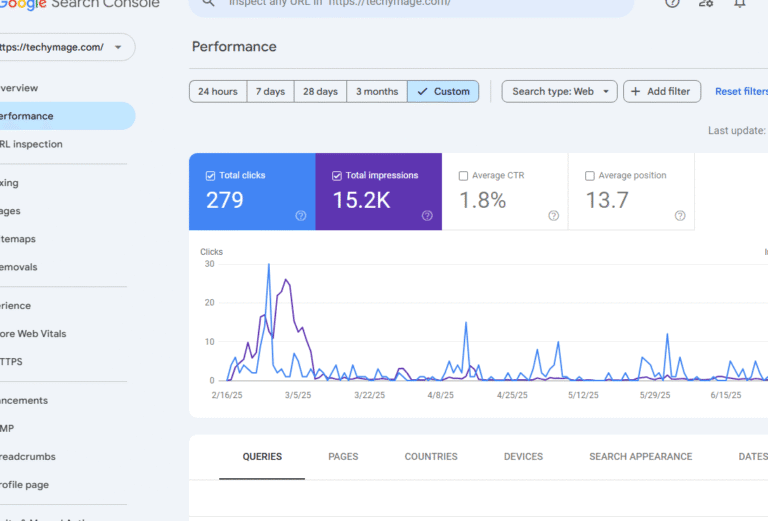
Literotica tags function as your personal guide through the vast world of online erotic literature, helping you find exactly what matches your preferences. When browsing through countless stories, these tags essentially serve as descriptive keywords that categorize content by theme, fetish, genre, relationship type, and character roles.
We’ve all encountered the annoyance of finding the content we were looking for, only to be let down. Litero tags are like a navigational guide among the world of adult literature. Literotica tags give you a short glimpse of what a story is about in advance, and at the same time, literotic story tags help to ensure that the content will appear when a user searches for specific content or themes. Literotica also has filtering options so that you can filter the stories you want to see by tag, rating, length, or publication date. You can make your reading experience more suited to your interests.
In this guide, I’ll take you through everything you need to know to get the most out of these tags. You’ll learn the difference between types of tags, smart tips to better customize your reading decisions and all that these navigation features have to offer.
Understanding Literotica Tags
Tags for literotica are keywords/phrases that place erotic stories into categories based on elements, themes, and subject matter. Tags are supportive text, digital labels, and are an efficient sorting method when readers are trying to find stories associated with their own interests. Tags provide a specific description of anything you will find in the text rather than larger categories.
Tags within online erotic fiction have a few important functions. Tags serve to increase discoverability of stories by providing well-defined pathways to their content. Rather than randomly browsing, anyone searching for a tag like “slow burn,” “office romance,” or “fantasy” can discover something they find interesting.
Also, these tags help facilitate a great filtering process. With sites like Literotica, tags are in the Story Info Box at the upper-left of every page directly underneath the title. By clicking a tag, you see a list of other stories with the same tag.
Interestingly, litero tags help build community among readers and writers with similar interests. They allow fans of certain genres or themes to find each other, share recommendations, and discuss favorite works.
Literotica tags also provide helpfully specific content warnings, to avoid themes or situations that you would prefer to avoid because you find them uncomfortable, awkward, or triggering. This is especially valuable in erotic fiction, because a topic could just about be anything in the erotic category and its often sensitive subject matter.
For writers, literotic story tags provide both creative inspiration and show trending elements in the genre. Authors can analyze popular or unpopular tags to better understand their chosen area of writing, so they can better orient their writing style and narrative, to an audience preference.
The real power of these tags is specificity. Good tags are descriptive and precise – for example, “female masturbation” works better than just “masturbation,” but too specific can be a little too specific, like “female masturbating by a tree close to a school.” The best tags create specificity that is beyond a general category, but not too specific that it creates a lack of discoverability for the user.
In short, literotica tags change how we experience adult fiction, creating a journey that is more personalized, streamlined, and enjoyable.
Types of Tags You Should Know
Navigating through the vast universe of literotica tags requires understanding the main categories that organize this content. These classifications help readers quickly find stories that match their specific interests without endless scrolling.
Relationship Dynamic Tags highlight the interactions and power structures between characters. These include tags like “Romance,” “BDSM,” “Polyamory,” and “Swingers” – each describing different ways characters connect and engage with one another. For readers seeking specific relationship scenarios, these tags offer direct access to preferred dynamics.
Theme and Scenario Tags establish the setting and context of stories. Popular options include “Office,” “Fantasy,” “Historical,” and “Sci-Fi.” These literotic story tags transport you to specific worlds or situations, creating the backdrop against which the narrative unfolds.
Kink and Fetish Tags are perhaps the most specific, directing readers to particular interests or preferences. Tags like “Domination,” “Submission,” “Voyeurism,” and “Roleplay” allow readers to explore niche desires with precision. Indeed, these tags serve both to attract interested readers and warn those who might prefer to avoid certain content.
Sexual Orientation Tags such as “Straight,” “Lesbian,” “Gay,” and “Bisexual” indicate the sexual identities represented in the story. These litero tags help readers find content that aligns with their orientation or interests.
Genre-Based Tags function similarly to traditional literary genres, with options like “Romance,” “Drama,” “Horror,” and “Humor” setting expectations for the story’s overall tone and approach.
According to Literotica’s own data, some of the most used literotca tags include “anal” (55,684 stories), “oral” (40,196 stories), “blowjob” (36,746 stories), and “lesbian” (34,638 stories).
Understanding these tag categories allows for more efficient navigation and a more satisfying reading experience tailored to your personal preferences.
Smart Tips for Using Tags in Personal Reading
Getting the most enjoyment out of your reading is contingent upon employing smart ways to use literotica tags effectively. The best system to use changes your browsing from just another exploratory reading into a fully customized journey tailored to your personal interests.
Using multiple tags to refine your search makes a potent filtering system. Instead of typing in “Romance.” try using “Romance – Office” and even “Romance – Office – Fantasy.” This will obviously narrow down your results by a lot. Even in terms of searching for specific stories, like “Gay + High School + First Love” creates a much more limited but appropriate fields than using any of the individual tags alone.
In respect to tags, there is also a major time advertisement by a very system forming a quick bookmark of tags. This is probably the best approach to finding material that we are comfortable with, and even gives us some time back, if we do find tags that see similar things-it makes sense to bookmark these tags when we get ready to read next chance. This gives us a kind of personal shortcut system to subject matter that we truly will enjoy.Following authors who consistently use tags matching your interests is another effective strategy. Many writers specialize in particular themes, and their consistent tagging patterns can lead you to more of what you love. This approach builds a network of reliable content sources aligned with your preferences.
Really think about the content warnings in tags. These warnings are the first step to helping you uncover content that other creators might describe a bit differently. These tags could be quite necessary and significant for someone who has triggers or emphasizes certain dislikes or likes, while still keeping you unspoiled (for the most part) regarding the plot of the work.
You might also want to think of tags as tools for exploration. You don’t only have to stick to familiar places. In fact, browsing non-familiar tags every once in a while might bring you something totally new and unexpected. It sometimes pays to be curious!
When you’re doing your general browsing, be careful with misleading tags. Sadly, there are some writers that tag things that just seek visibility; there are some popular tags that have no relation to the content being created, and that is disappointing. The “hook-tag” is out there— it gets the creator a few extra views but is ultimately exhausting for the reader if they assume something specific due to tags.
Lastly, think of tags as expectations and flag posts for less-coverage subject matter. Remember that they’re like signs, not detailed maps. A well tagged story should assist YOU in finding wanted content in a, mostly, predictable way that also introduces you to unexpected content you didn’t particularly know you were looking for.
Conclusion
Getting confounded by literotica tags surely has an impact on how we all engage with erotic fiction online. Definitely, we have explored throughout this guide how the tags are specialized terms, meant to classify and help readers navigate their way to the content that piques their interest, and away from content that doesn’t suit it. read about OTT App for Media Brands: A Blueprint for Digital Domination.
At a minimum, an understanding of the basic purpose of tags – categorization and discovery – gives us a framework to have a better reading experience. In addition, having an understanding of the different genres/type of tags – such as relationship dynamics, kinks, genres – provides us better guided discovery and allows us to spend time directly involved in literacy pleasures.
Probably more importantly, the guided approaches discussed – combining tags, bookmarking, following authors with consistent tags – provide realistic approaches to customizing our discourse with literotica. Literotica tags are valuable to finding content but, it is more valuable in the construction of curated products unique to you.
Of course content warnings that are embedded in tags also necessitate special consideration. It is useful information when a content warning provides critical information while not ruining or spoiling plot summaries so the reader can make an informed decision about the content they choose to engage with.
Tags streamline the process of discovering literature, as they can also offer an opportunity for meaningful exploration. For instance, expanding beyond familiar spaces where you usually read new tags can lead to surprises regarding interests or preferences that you may never have previously considered.
Ultimately, literotica tags act as your personal compass in the vast sea that is online erotic fiction. By using the knowledge and strategies represented in this guide, you should feel more confident, effective, and satisfied with your exploration of this world. If you consider yourself a casual reader or engaged erotic literature enthusiast, implementing smart tagging practices will definitely enhance your experience with digital romantic literature.
FAQs
Q1. What are Literotica tags and why are they important?
Literotica tags are keywords that categorize erotic stories based on themes, genres, and content. They’re crucial for helping readers find stories that match their interests and for writers to reach their target audience.
Q2. How can I use tags to improve my reading experience on Literotica?
You can combine multiple tags for more specific searches, bookmark your favorite tag combinations, and follow authors who consistently use tags matching your interests. This helps create a more personalized and enjoyable reading experience.
Q3. Are there different types of Literotica tags?
Yes, there are several types including relationship dynamic tags, theme and scenario tags, kink and fetish tags, sexual orientation tags, and genre-based tags. Each type helps categorize stories in different ways.
Q4. How do content warning tags work on Literotica?
Content warning tags alert readers to potentially sensitive or extreme content without spoiling plot details. They help readers make informed choices about the material they consume and avoid triggering content.
Q5. Can Literotica tags help me discover new interests?
Absolutely. While tags are great for finding familiar content, occasionally exploring unfamiliar tags can introduce you to new interests and expand your reading horizons. It’s a great way to discover unexpected preferences in erotic literature.




